Imagine a plant so versatile and stunning that it transforms your garden into a mesmerizing work of art.
Echeveria, with its rosette-shaped allure and vibrant colors, does just that.
Whether you’re a seasoned gardener or just starting your green journey, this succulent will captivate your heart and elevate your garden.
Overview of Echeveria
Origin and History
Echeveria is a genus of succulents native to Central and South America, particularly Mexico.
Named after Atanasio Echeverría y Godoy, an 18th-century Mexican botanical artist, this plant has a rich history rooted in admiration for its beauty.
Its adaptability to arid conditions made it a staple in traditional gardens, symbolizing resilience and simplicity.
Unique Features
Echeveria is known for its charming rosettes that come in an array of colors—shades of green, pink, blue, and even purple.
The plant’s waxy coating not only adds to its aesthetic but also helps it retain water, making it a low-maintenance addition to any home or garden.
Each variety has a unique personality, ensuring there’s an Echeveria for everyone.
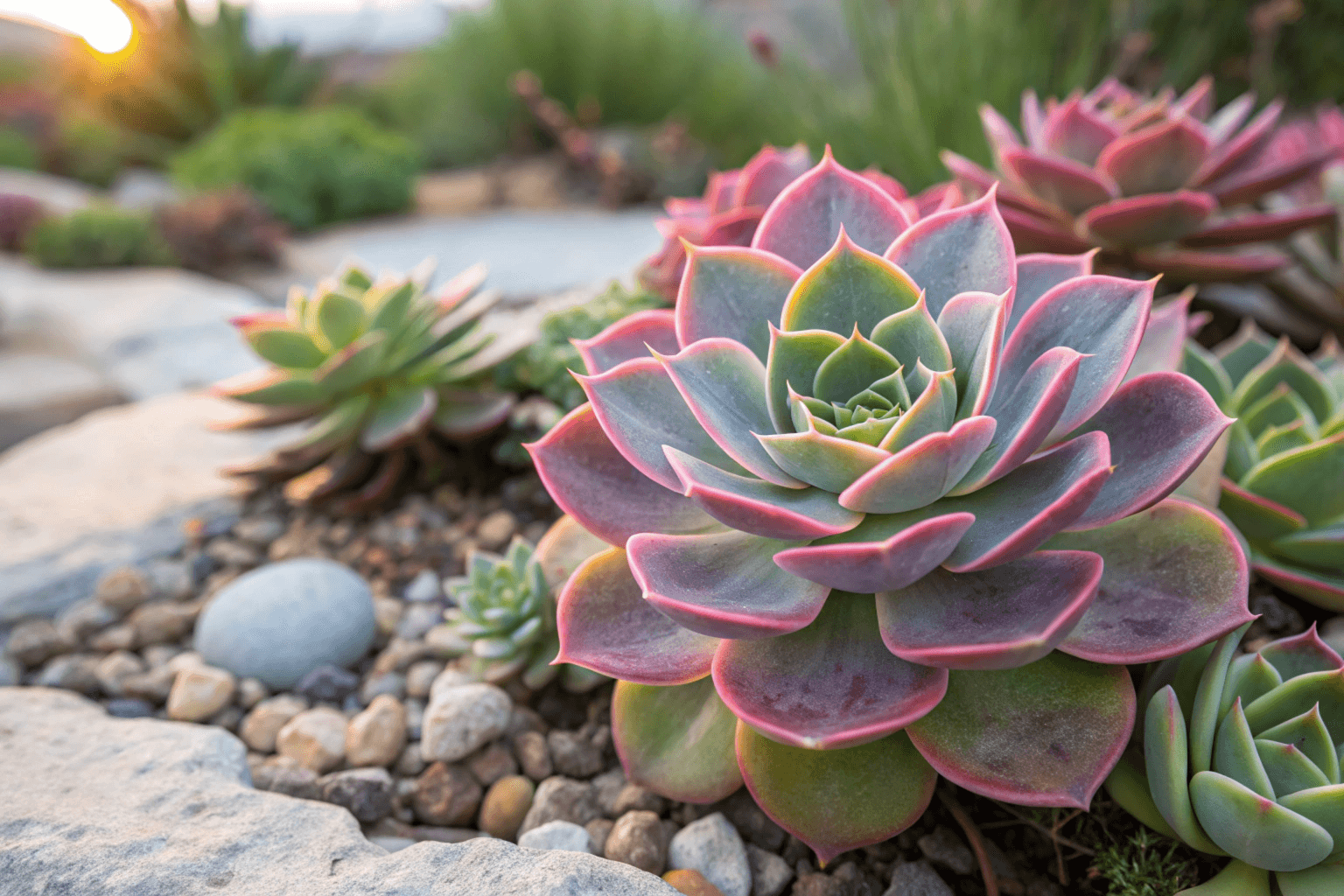
Popular Echeveria Varieties
Dive into the enchanting world of Echeveria with these popular varieties. Each brings a distinct charm to gardens and indoor spaces.
Echeveria ‘Imbricata’
Often called the “Blue Rose Echeveria,” this variety features compact blue-green rosettes. Its layered, symmetrical growth makes it a favorite for succulent enthusiasts.
Echeveria ‘Princess Lace’
Delicate and elegant, ‘Princess Lace’ boasts soft pink edges that seem hand-painted. It’s perfect for adding a romantic touch to any arrangement.
Echeveria agavoides ‘Maria’
With its striking red-tipped leaves and vibrant green base, ‘Maria’ resembles a miniature agave plant. It’s a bold addition to rock gardens or succulent collections.
Echeveria ‘Frank Reinelt’
This hybrid variety is renowned for its large, colorful rosettes. Shades of purple and pink blend seamlessly, creating a dreamy, pastel-like appearance.
Echeveria ‘Lady Aquarius’
A regal beauty, ‘Lady Aquarius’ features soft blue-green leaves with pinkish tips, exuding a tranquil yet vibrant vibe.
Echeveria elegans
Known as the “Mexican Snowball,” this classic variety has pale blue rosettes that shimmer like frost.
It’s an excellent choice for creating a serene garden display.
By understanding and incorporating these varieties, you can create a living masterpiece that thrives with minimal care.
With Echeveria, you are not just growing a plant; you’re cultivating art and beauty that lasts.
Why Should You Grow Echeveria?
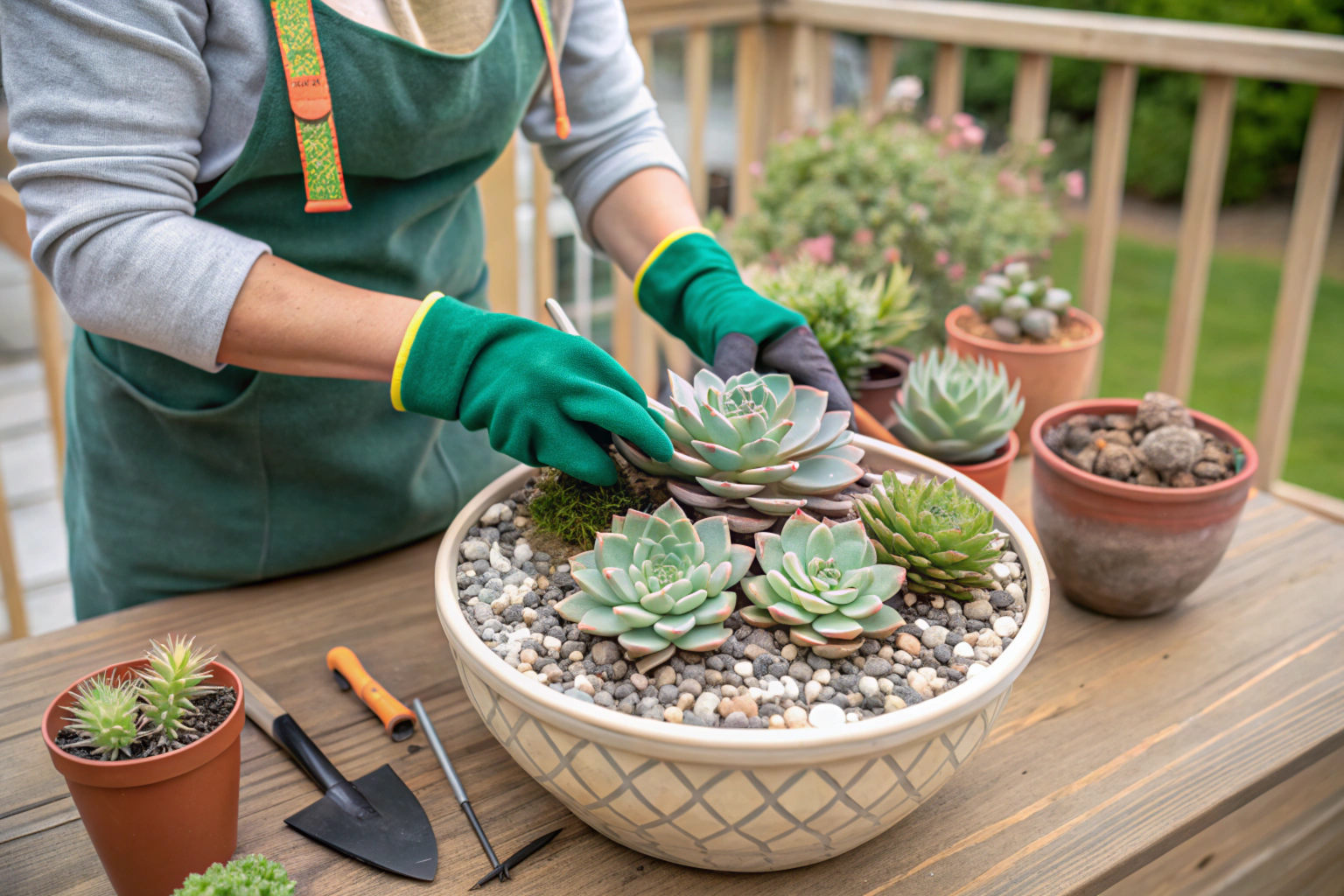
Have you ever longed for a garden that feels like a personal oasis—a space that brings beauty, peace, and joy every time you look at it?
Growing Echeveria can turn that dream into reality.
This enchanting succulent isn’t just a plant; it’s a statement piece that transforms any garden or home into a serene, low-maintenance haven.
Let’s explore the irresistible reasons why adding Echeveria to your life is one of the best decisions you will make.
Aesthetic Appeal: Nature’s Living Art
Echeveria is more than just a succulent; it’s a work of art sculpted by nature.
Its symmetrical rosette shape is a visual masterpiece, while its colors range from soft greens and blues to striking purples, pinks, and reds.
Whether you’re designing a minimalist indoor setup or a lush outdoor garden, Echeveria adds a touch of elegance and charm that’s hard to ignore.
Imagine a windowsill adorned with rows of Echeveria in dainty pots, their colors glowing as sunlight filters through.
Or picture an outdoor rock garden with clusters of these vibrant succulents, creating a magical, almost fairytale-like ambiance.
Growing Echeveria allows you to enjoy this beauty every single day.

Low-Maintenance Characteristics: Perfect for Every Gardener
For those who love greenery but worry about the time and effort involved, Echeveria is a dream come true.
This succulent thrives on neglect, requiring minimal water and care.
With its natural ability to store water in its leaves, Echeveria is perfectly suited for busy lifestyles or forgetful plant parents.
Unlike high-maintenance plants that demand constant attention, Echeveria is content in well-drained soil, bright sunlight, and occasional watering.
It’s an ideal choice for beginners or anyone looking to add a touch of green without the stress.
Its resilience to drought and adaptability make it a plant that practically takes care of itself.
Versatility in Garden Design: Endless Creative Possibilities
Whether you’re working with a sprawling backyard or a tiny balcony, Echeveria fits seamlessly into any space.
Its compact size and striking appearance make it an excellent choice for creating stunning arrangements.
From vertical gardens and terrariums to rock gardens and centerpieces, the design possibilities with Echeveria are endless.
Want to make your garden stand out? Combine Echeveria with other succulents, decorative rocks, and driftwood for a natural, earthy aesthetic.
Prefer something bold? Use colorful pots or geometric containers to complement Echeveria’s vibrant hues.
This succulent doesn’t just adapt to your space; it enhances it.
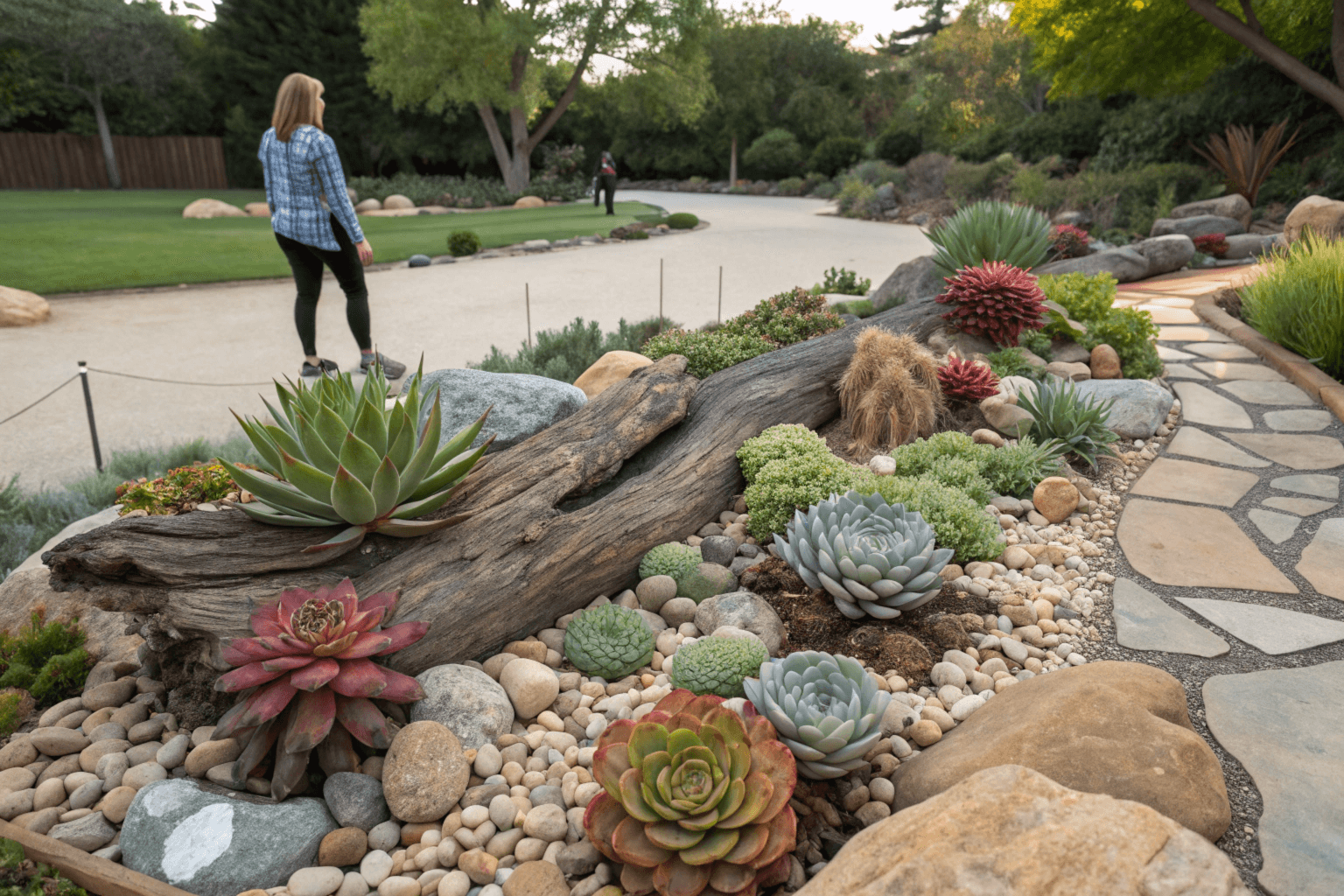
Growing Echeveria isn’t just about cultivating a plant—it’s about inviting beauty, simplicity, and creativity into your life.
With its stunning looks, effortless care, and unmatched versatility, Echeveria is the perfect addition to any home or garden.
Embrace the joy of growing this timeless succulent and watch as it transforms your space into something extraordinary.
Echeveria Care: Essential Growing Tips
There’s something magical about nurturing a plant and watching it flourish.
With Echeveria, that magic is amplified by its stunning rosettes and vibrant colors.
This low-maintenance succulent rewards even the simplest care with beauty that lasts.
Whether you’re a seasoned gardener or just beginning your plant journey, following these essential growing tips will ensure your Echeveria thrives.
Light: Let Your Echeveria Shine
Ideal Sunlight Conditions
Echeveria loves the sun, and bright, indirect light is its best friend.
Ideally, place your plant where it can soak up at least six hours of sunlight daily.
If you’re growing Echeveria indoors, a sunny windowsill is perfect.
Outdoors, situate it in a spot with morning sun and afternoon shade to avoid scorching.
Think of the sunlight as fuel for your Echeveria’s vibrant colors.
Proper lighting brings out its vivid hues, making your plant look like a living jewel.
Handling Shade
While Echeveria can tolerate partial shade, prolonged lack of sunlight can cause it to lose its vibrant colors and grow leggy as it stretches toward the light.
If your plant isn’t getting enough sun, consider supplementing with a grow light to keep it happy and healthy.

Soil: The Foundation of Healthy Growth
Best Soil Mix for Echeveria
Echeveria thrives in a well-draining soil mix.
A blend of cactus soil and perlite is ideal, providing the right balance of nutrients and aeration.
Avoid heavy, compacted soils that retain water, as they can lead to root rot.
Importance of Drainage
Proper drainage is crucial for Echeveria’s survival.
Always use a pot with drainage holes to allow excess water to escape.
If planting outdoors, ensure the soil doesn’t stay soggy after rain by adding sand or gravel to improve drainage.
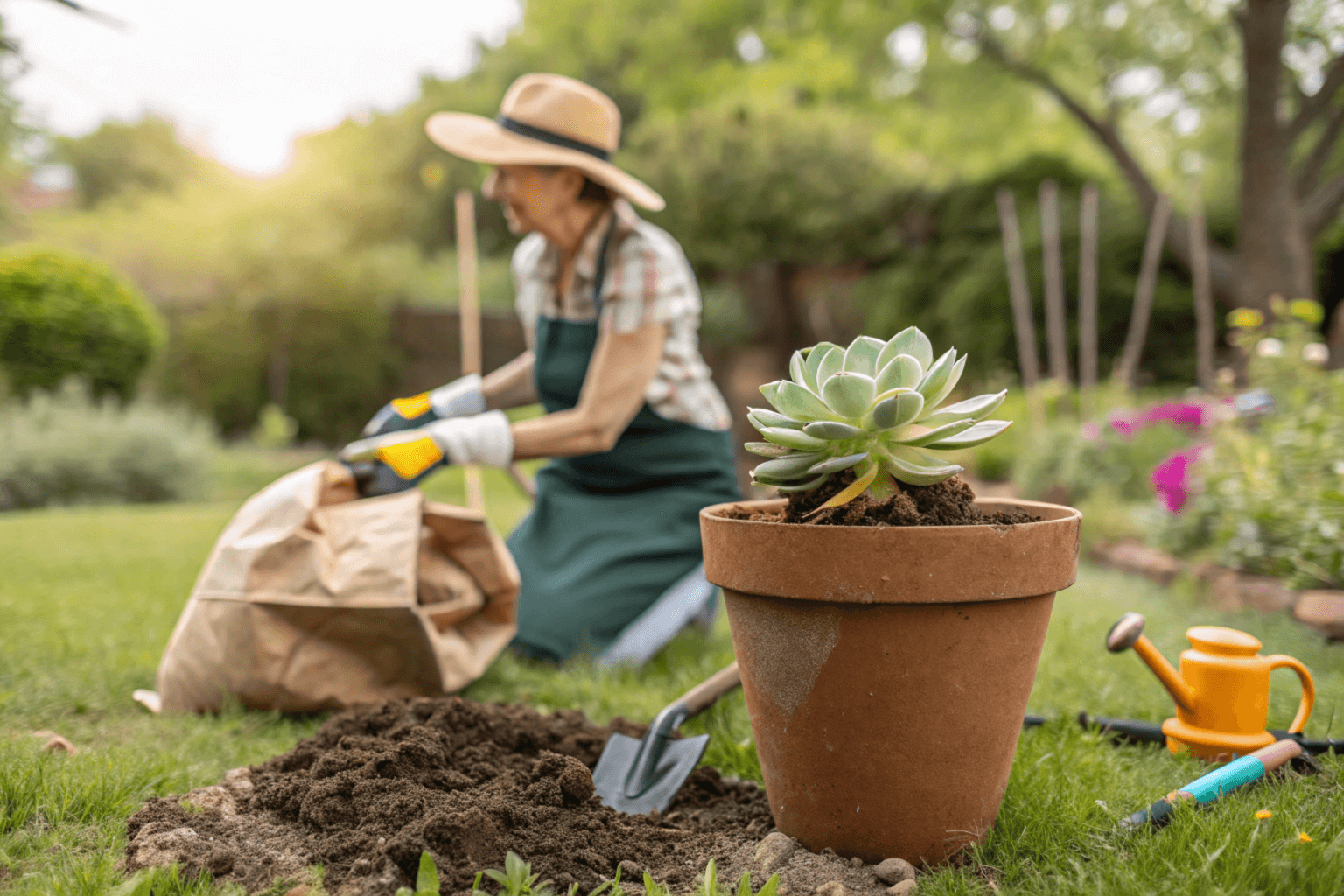
Water: The Art of Balance
Watering Schedule
Watering Echeveria is all about balance.
During the growing season (spring and summer), water deeply but infrequently—typically every two to three weeks.
Ensure the soil is completely dry between waterings. In the dormant season (fall and winter), reduce watering to once a month or less.
Signs of Overwatering
Overwatering is the most common cause of Echeveria problems.
If you notice mushy leaves, a foul smell, or browning at the base, your plant may be waterlogged.
Act quickly by reducing water and allowing the soil to dry out.
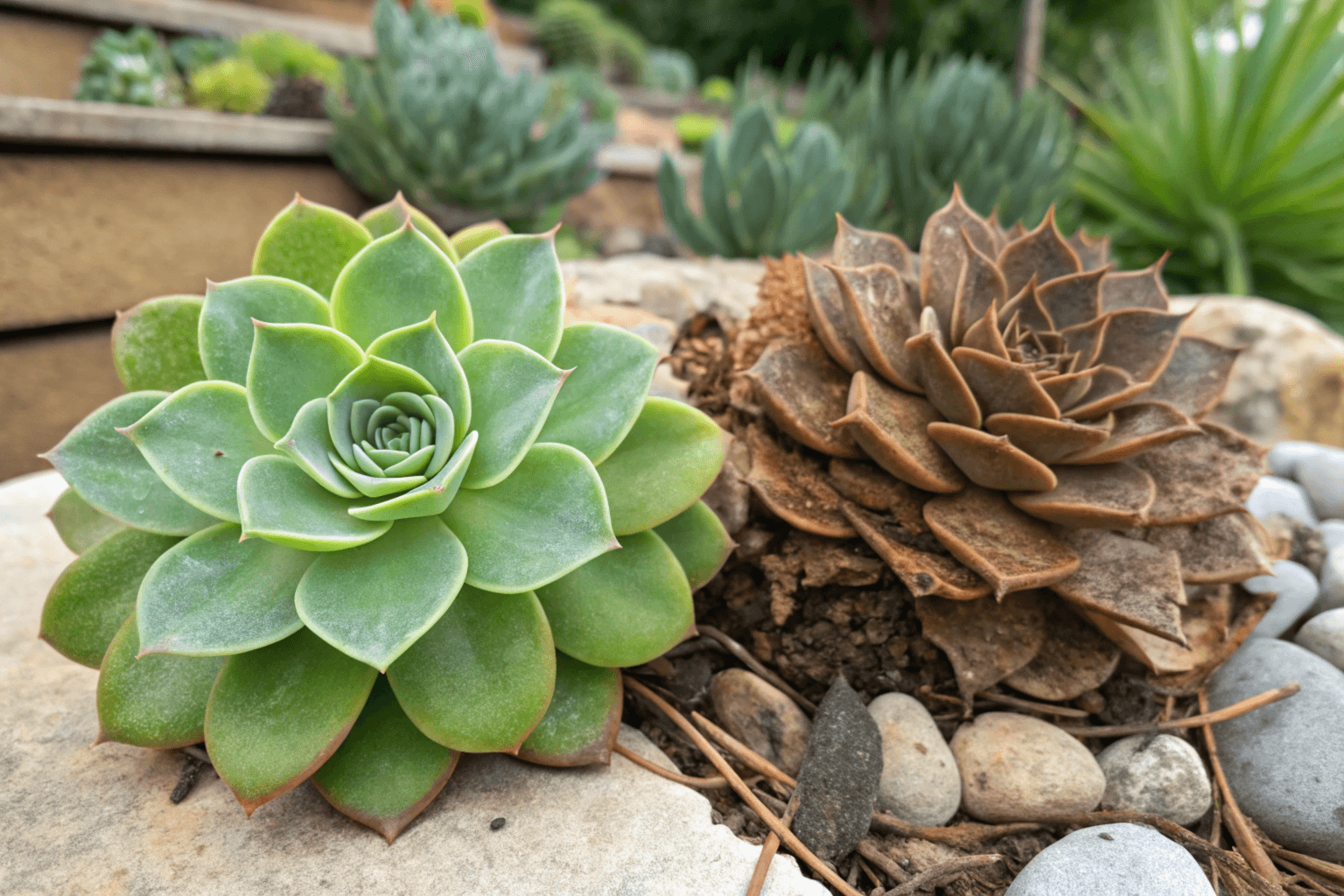
Temperature and Humidity: Adapting to Conditions
Climate Tolerance
Echeveria thrives in warm, dry climates, preferring temperatures between 60°F and 80°F (15°C to 27°C).
While it can tolerate occasional dips into the 40s, prolonged exposure to frost can damage the plant.
Tips for Extreme Weather
If you live in a region with cold winters, bring your Echeveria indoors before the first frost.
For hot climates, provide afternoon shade to protect the plant from intense heat.
In humid areas, increase air circulation around the plant to prevent fungal issues.

Fertilizer: Feeding Your Echeveria
Frequency and Type
Feed your Echeveria sparingly during its active growing season.
Use a balanced, water-soluble fertilizer diluted to half strength once a month in spring and summer.
Avoid fertilizing in the dormant months, as the plant won’t need the extra nutrients. Over-fertilizing can lead to weak, leggy growth.
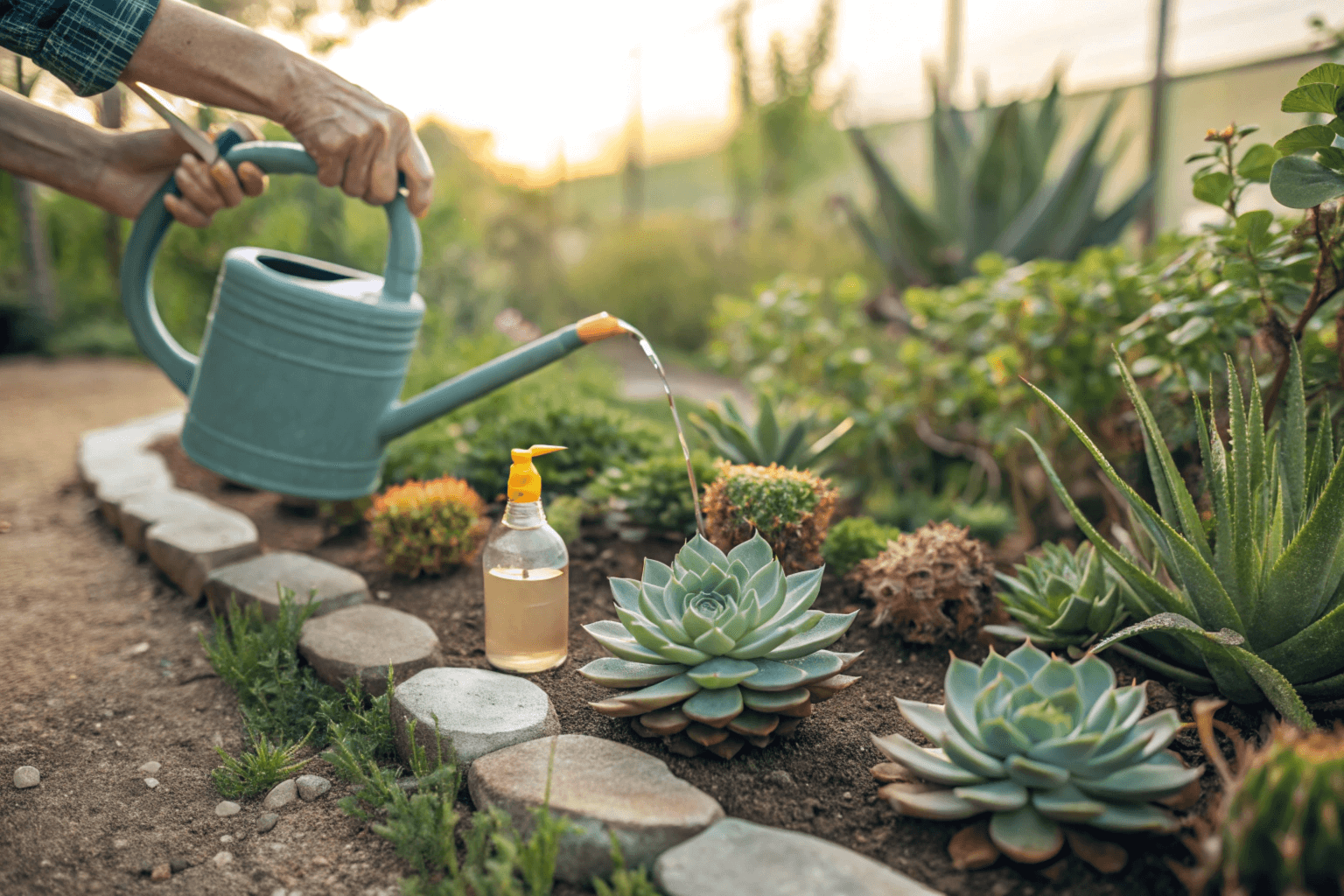
By following these simple yet essential tips, you can enjoy the rewarding experience of growing a thriving, beautiful Echeveria.
This resilient plant not only adds charm to any space but also serves as a reminder of nature’s incredible artistry.
Designing Gardens with Echeveria
Imagine stepping into your garden and feeling an overwhelming sense of calm and joy.
The vibrant colors, sculptural forms, and effortless charm of Echeveria can create a space that feels like an extension of your creativity and love for nature.
Whether you are designing a front yard masterpiece or adding a touch of elegance to a container garden, Echeveria transforms ordinary spaces into living works of art.
Let’s explore inspiring garden ideas and discover the perfect companion plants to enhance the beauty of Echeveria.
Garden Examples
A Long-Lasting and Colorful Front Garden
Transform your front yard into a welcoming haven with a colorful display of Echeveria.
Mix different varieties to create a tapestry of rosettes in shades of green, pink, and purple.
Pair them with ornamental grasses or small boulders to add height and texture.
This design is not only visually stunning but also low-maintenance, making it perfect for busy homeowners.
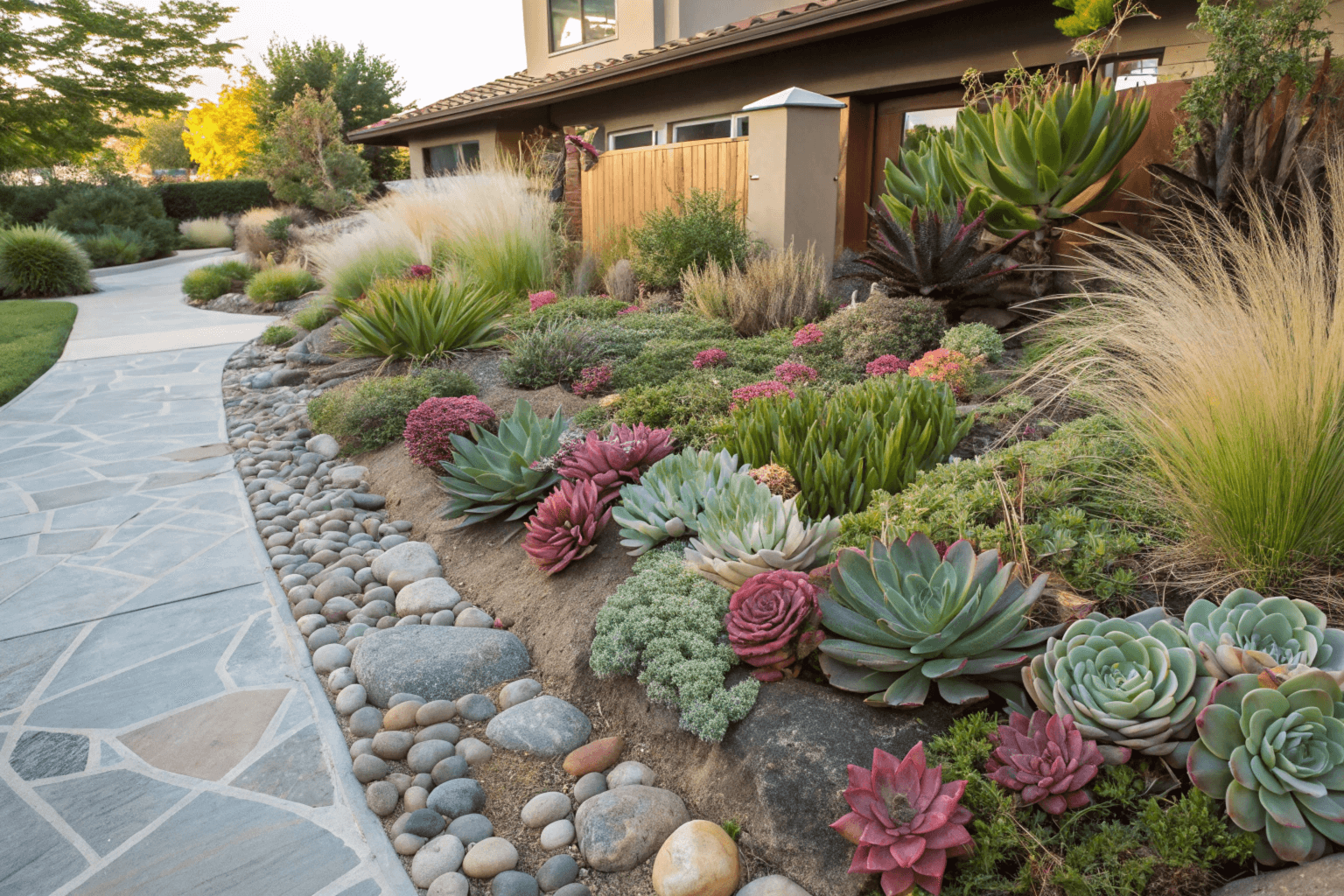
A Pretty Container Idea with Sea Lavender and Lotus
For a more compact design, try a container arrangement featuring Echeveria alongside sea lavender and lotus plants.
The delicate blooms of sea lavender complement the bold rosettes of Echeveria, while the lotus adds an exotic touch.
This setup is perfect for patios, balconies, or any small outdoor space needing a pop of color.

A Ravishing Zen Garden
Create a peaceful retreat with a Zen-inspired garden that showcases Echeveria.
Combine the succulents with smooth river rocks, white sand, and minimalist wooden accents.
The symmetry and simplicity of Echeveria align beautifully with the calming aesthetics of a Zen garden.
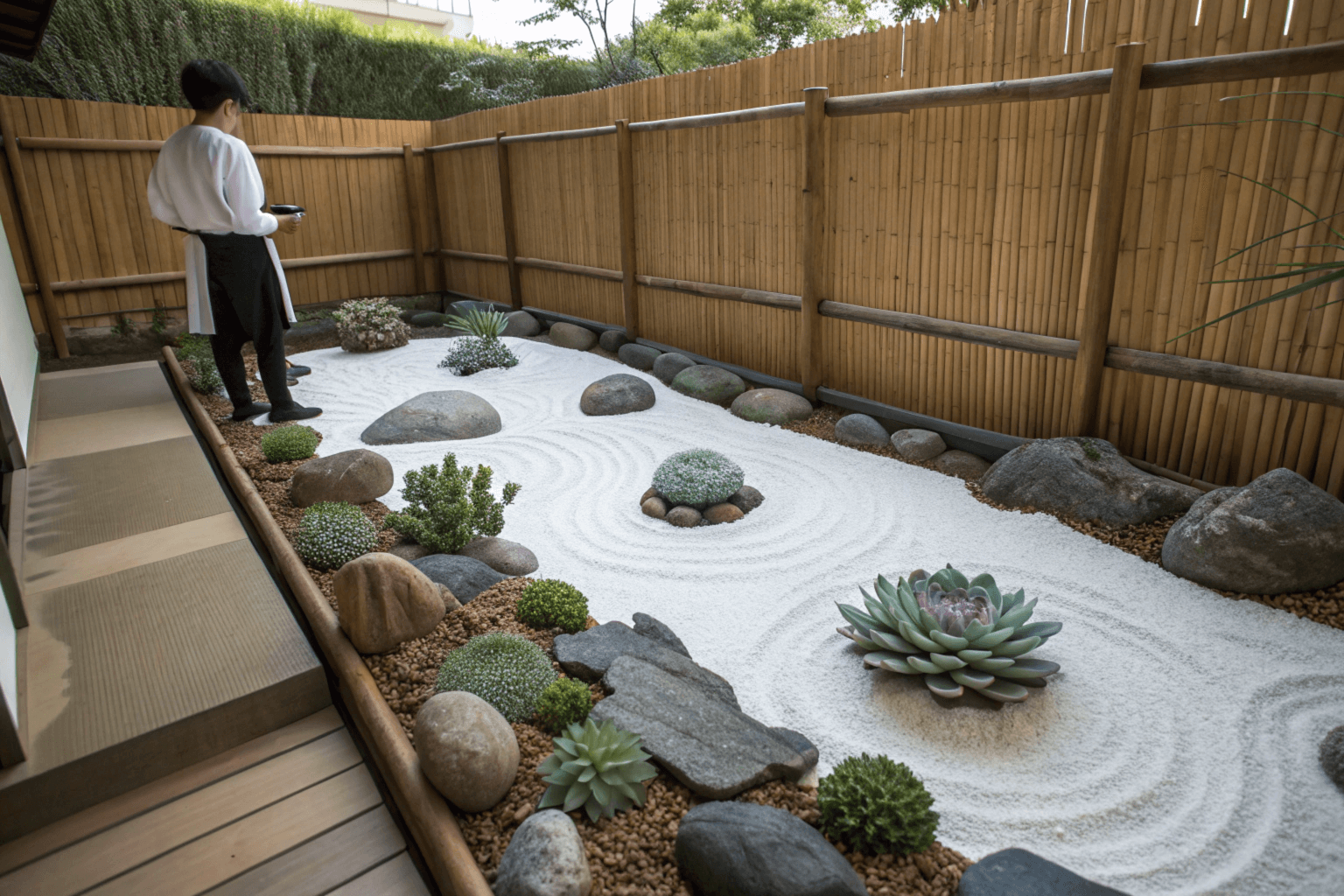
A Terrific Mediterranean Garden with Color and Texture
Bring the warmth of the Mediterranean to your garden with a mix of Echeveria, lavender, rosemary, and olive trees.
The contrasting textures and colors create a vibrant yet harmonious design that thrives in sunny climates.
Add clay pots and gravel pathways for an authentic Mediterranean feel.

A Strikingly Colorful and Low-Care Mediterranean Border
Border your garden with a colorful mix of Echeveria varieties for a show-stopping design that’s both beautiful and practical.
Combine them with drought-tolerant plants like sedum and agave to ensure the garden remains low-maintenance year-round.

Companion Plants for Echeveria
Pairing Echeveria with the right companion plants can elevate your garden’s design and ensure a harmonious growing environment.
Here are some excellent options:
Agave
Known for its bold, architectural shape, agave pairs beautifully with the softer rosettes of Echeveria, creating striking contrasts.
Aeonium
Aeonium’s dramatic, layered growth complements the symmetry of Echeveria, adding height and variety to your garden.
Aloe
Aloe’s spiky leaves and medicinal properties make it an ideal partner for Echeveria in both aesthetic and functional gardens.
Kalanchoe
With its vibrant blooms and fleshy leaves, kalanchoe adds a splash of color and texture to any Echeveria arrangement.
Crassula
Known for its unique, compact growth, crassula adds visual interest to succulent gardens featuring Echeveria.
Opuntia (Prickly Pear Cactus)
For a touch of the exotic, combine Echeveria with opuntia. Its large pads and vibrant flowers create an eye-catching contrast.
Sedum (Stonecrop)
Sedum’s trailing habit and small, colorful leaves make it a perfect ground cover around Echeveria clusters.
Mammillaria
This small cactus adds a whimsical touch to succulent arrangements, with its round shape and occasional blooms complementing Echeveria.
Sempervivum (Hens and Chicks)
Sempervivum, a close relative of Echeveria, creates a cohesive yet varied look when paired together, thanks to its similarly structured rosettes.
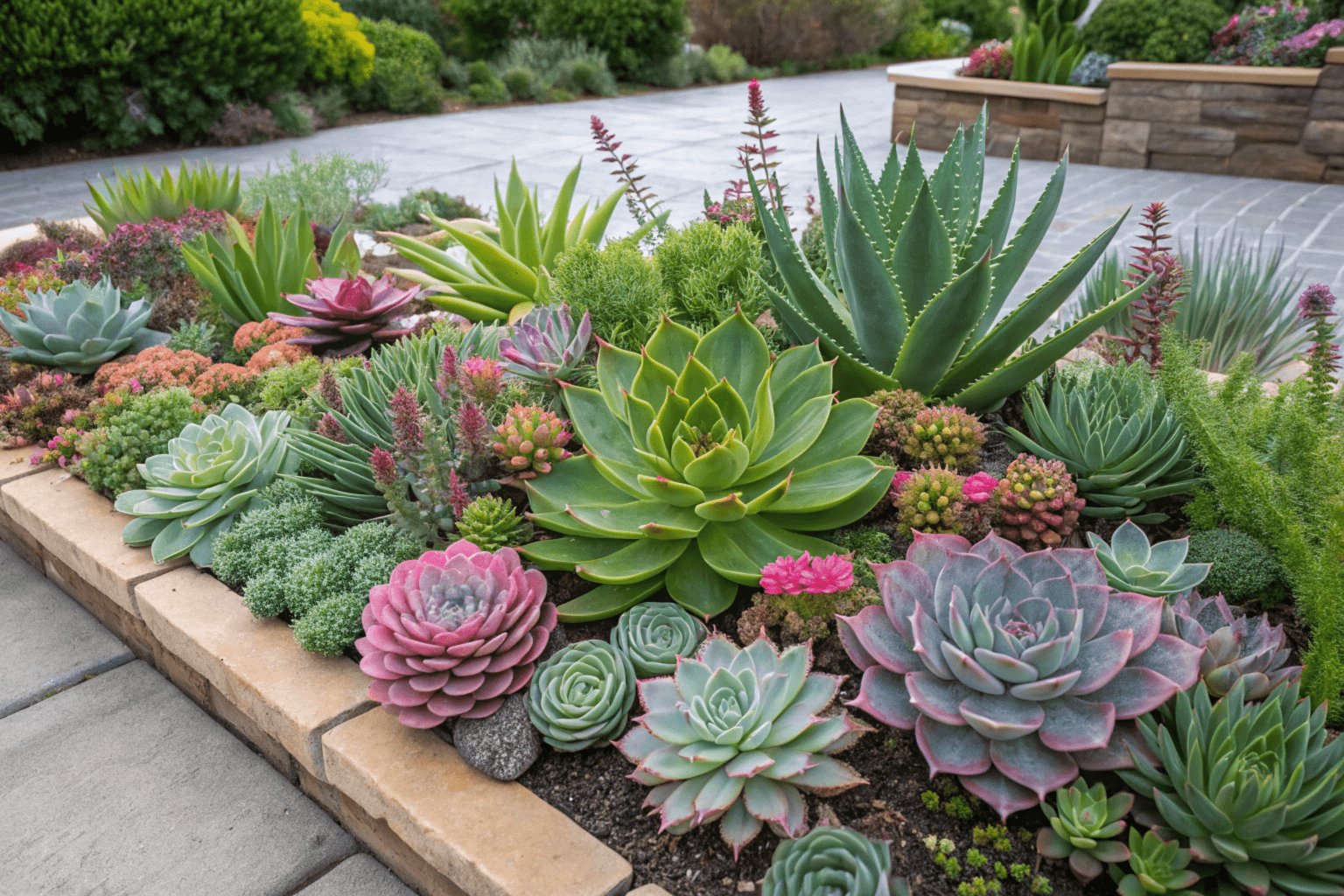
With Echeveria as the centerpiece, your garden can become a space that reflects your creativity and love for nature.
From vibrant container displays to serene Zen gardens, the possibilities are endless.
Combine these ideas with the right companion plants, and you’ll have a breathtaking garden that’s both low-maintenance and unforgettable.
Propagating Echeveria
There is something profoundly satisfying about watching a tiny piece of a plant grow into a thriving, independent beauty.
With Echeveria, propagation is not just a gardening technique—it’s a journey of patience, care, and connection with nature.
Whether you’re expanding your collection or sharing these lovely succulents with friends, propagating Echeveria is an enjoyable and rewarding process.
Let’s dive into the techniques that will help you create new life from your plants.
Propagation Techniques
1. Leaf Cuttings
One of the simplest and most popular methods for propagating Echeveria is through leaf cuttings.
Here’s how:
- Gently twist a healthy leaf off the stem, ensuring it comes off cleanly without tearing.
- Allow the leaf to dry for a few days until the cut end forms a callus.
- Place the leaf on top of well-draining soil, avoiding direct sunlight.
- Mist the soil lightly every few days to encourage root growth.
After a few weeks, tiny roots and a new rosette will begin to form at the base of the leaf.
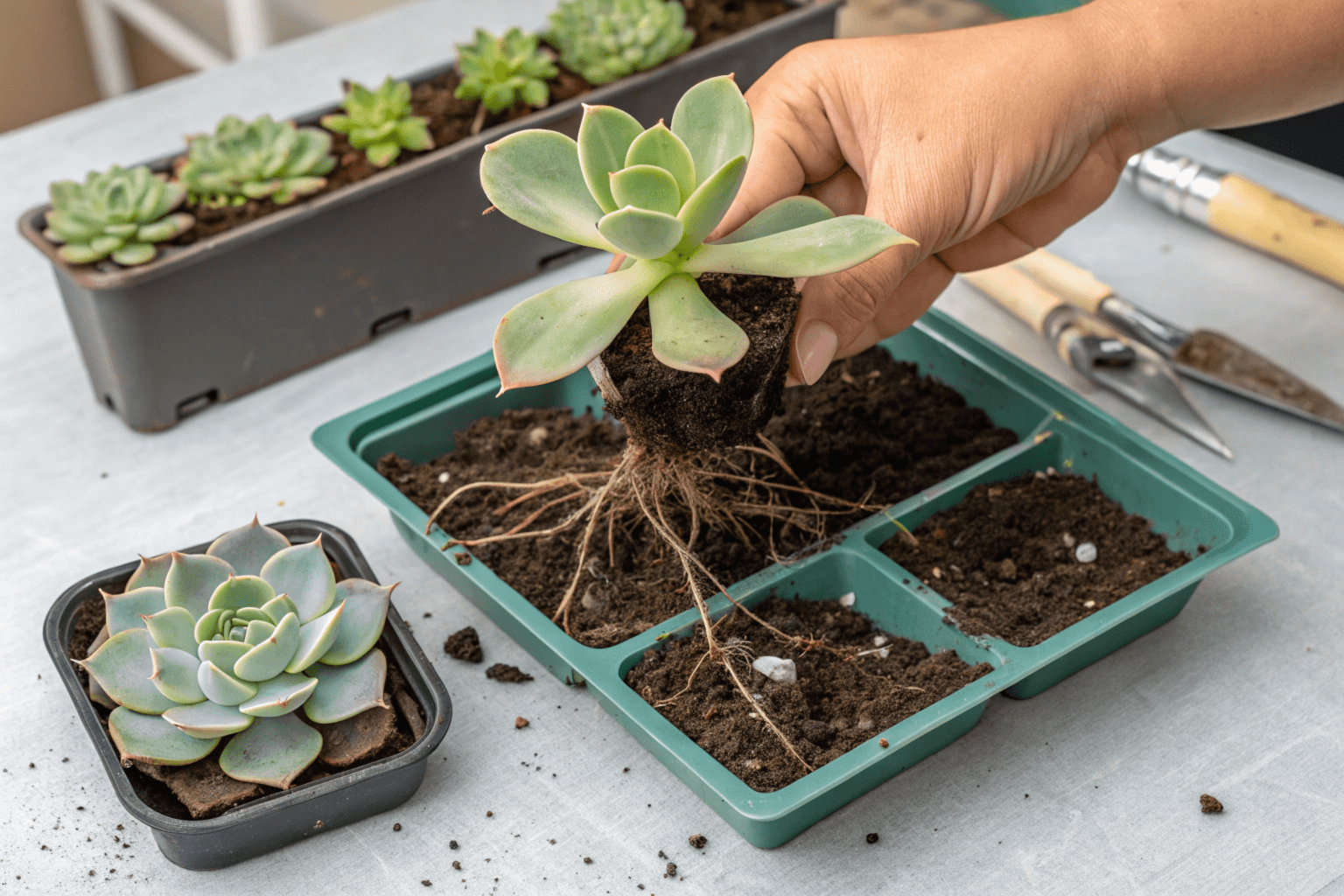
2. Offsets
Offsets, also called pups, are small rosettes that grow around the base of a mature Echeveria. They’re nature’s way of multiplying these stunning succulents.
- Carefully remove the offset using a clean, sharp knife or by gently twisting it away from the mother plant.
- Allow the cut end to dry and callus for a few days.
- Plant the offset in well-draining soil and water sparingly until roots establish.
This method is ideal for quick results, as offsets are already miniature versions of the parent plant.
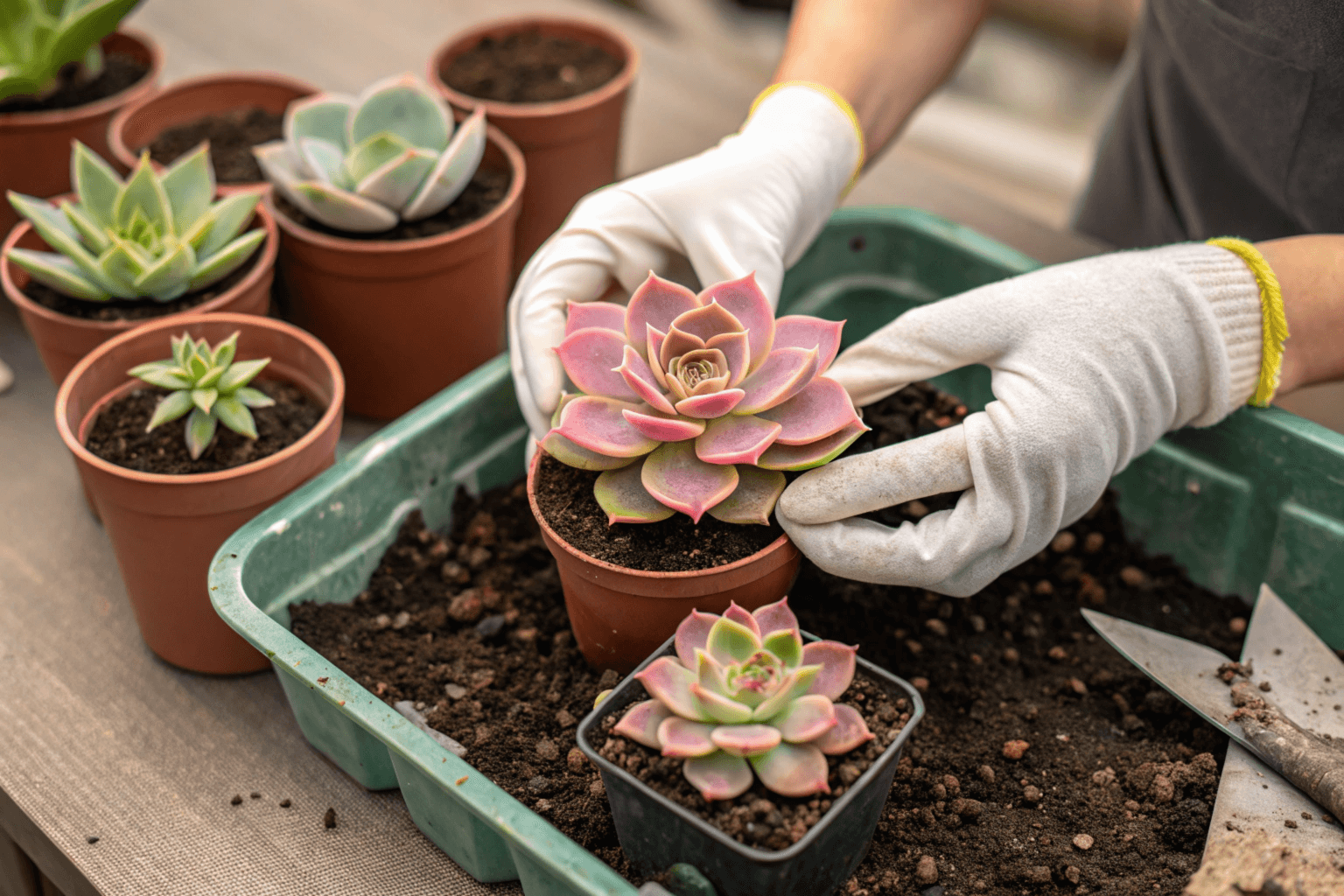
3. Stem Cuttings
Stem cuttings are great for rescuing a leggy or overgrown Echeveria.
- Cut the rosette from the stem using sterilized scissors or a knife, leaving a few inches of bare stem below.
- Allow the cutting to dry and callus for several days.
- Plant the stem in well-draining soil, keeping it in a bright but indirect light location.
Over time, roots will form, and the cutting will develop into a healthy new plant.
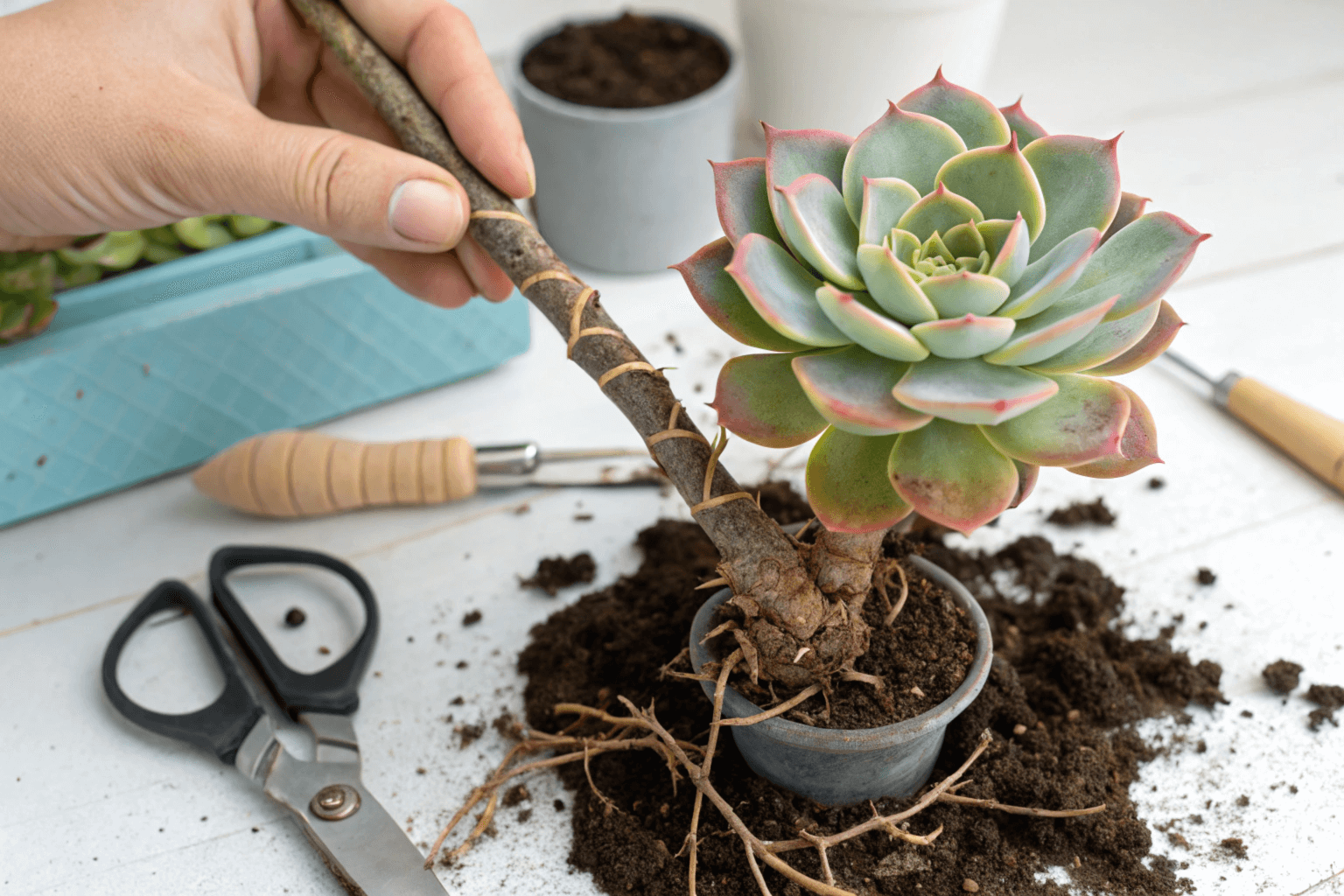
Growing Echeveria from Seed
Growing Echeveria from seed is a slower process but incredibly fulfilling for patient gardeners. Here’s what you need to know:
Germination Requirements
Echeveria seeds are tiny, so start with a shallow tray filled with a well-draining succulent mix.
Sprinkle the seeds evenly on the surface without covering them, as they need light to germinate.
Mist the soil lightly to moisten it, then cover the tray with a clear plastic lid or cling wrap to maintain humidity.
Place the tray in a bright location but out of direct sunlight, keeping the temperature between 65°F and 75°F (18°C to 24°C). Germination typically takes 1–3 weeks.
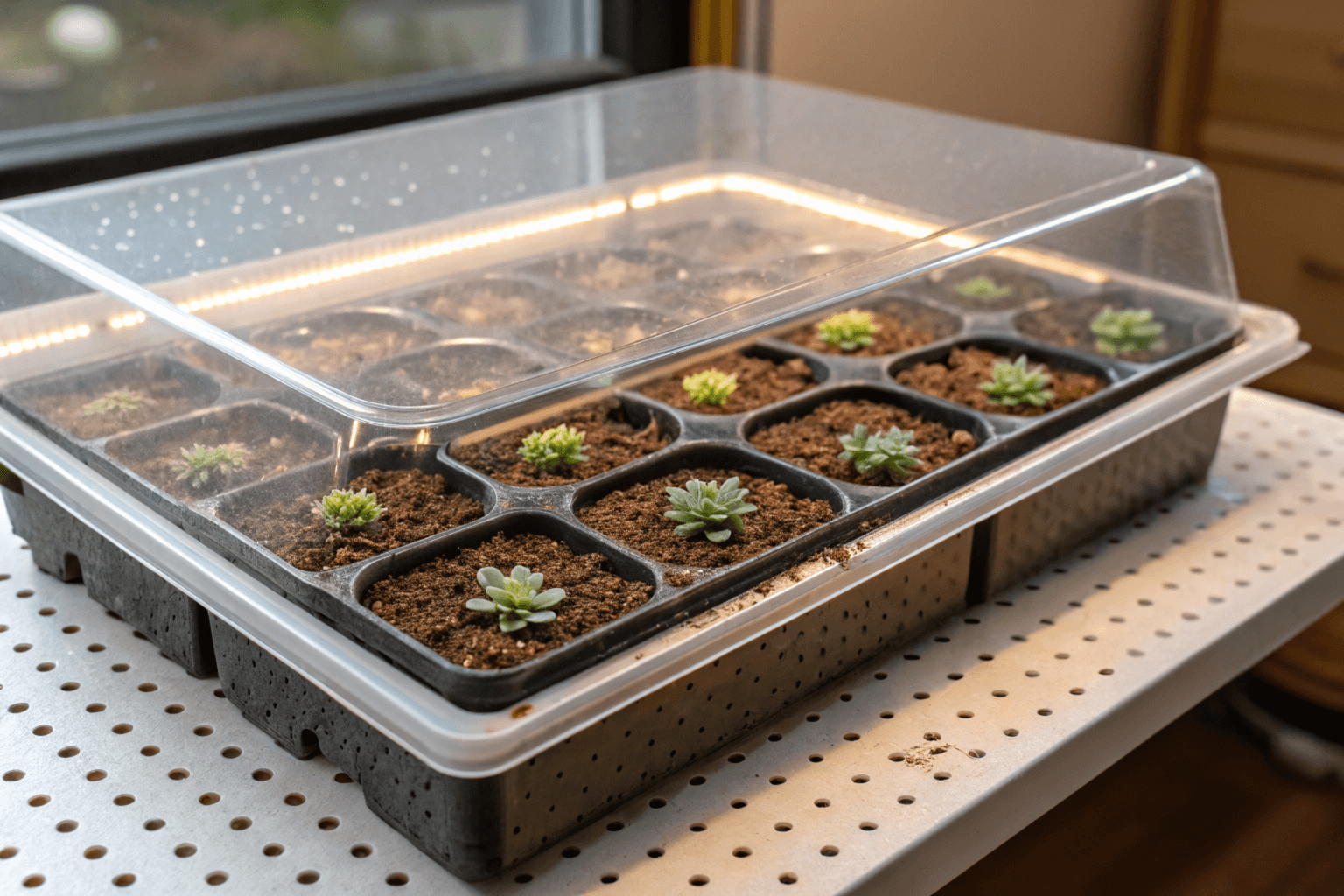
Timeline and Care
Once the seeds germinate, remove the cover and allow the seedlings to grow in indirect light.
Mist them lightly to avoid disturbing the delicate roots.
After a few weeks, you will notice tiny rosettes forming.
When they are large enough to handle, carefully transplant them into individual pots with well-draining soil.
Growing Echeveria from seed requires patience, but the reward of nurturing life from such a tiny beginning is worth every moment.

Propagating Echeveria is more than a gardening task—it’s a way to multiply beauty and share it with the world.
Each new plant is a reminder of nature’s resilience and your role in cultivating it.
Whether you choose leaf cuttings, offsets, or seeds, you’re not just growing succulents; you are growing joy.
Common Issues and Solutions: Keeping Your Echeveria Healthy
Even the most diligent plant parents can face challenges when growing Echeveria.
Sometimes, despite your best efforts, pests or unexpected changes in appearance can creep in, leaving you wondering where things went wrong.
The good news? Most problems have straightforward solutions, and with a bit of care and attention, your Echeveria can bounce back to its vibrant, thriving self.
Let’s explore the most common issues and how to tackle them effectively.
Common Pests and Diseases
1. Identifying and Treating Aphids and Mealybugs
Aphids and mealybugs are among the most common pests that can trouble Echeveria.
- Aphids are tiny, soft-bodied insects that suck the sap from your plant, often found clustering around new growth. Signs include sticky residue (honeydew) and curled leaves.
- Mealybugs look like small cottony clusters around the leaves and stem, feeding on plant juices and weakening the plant over time.
Solution:
- Remove the pests manually using a cotton swab dipped in rubbing alcohol.
- Spray the plant with a gentle insecticidal soap or neem oil.
- Regularly inspect your plant to catch infestations early.
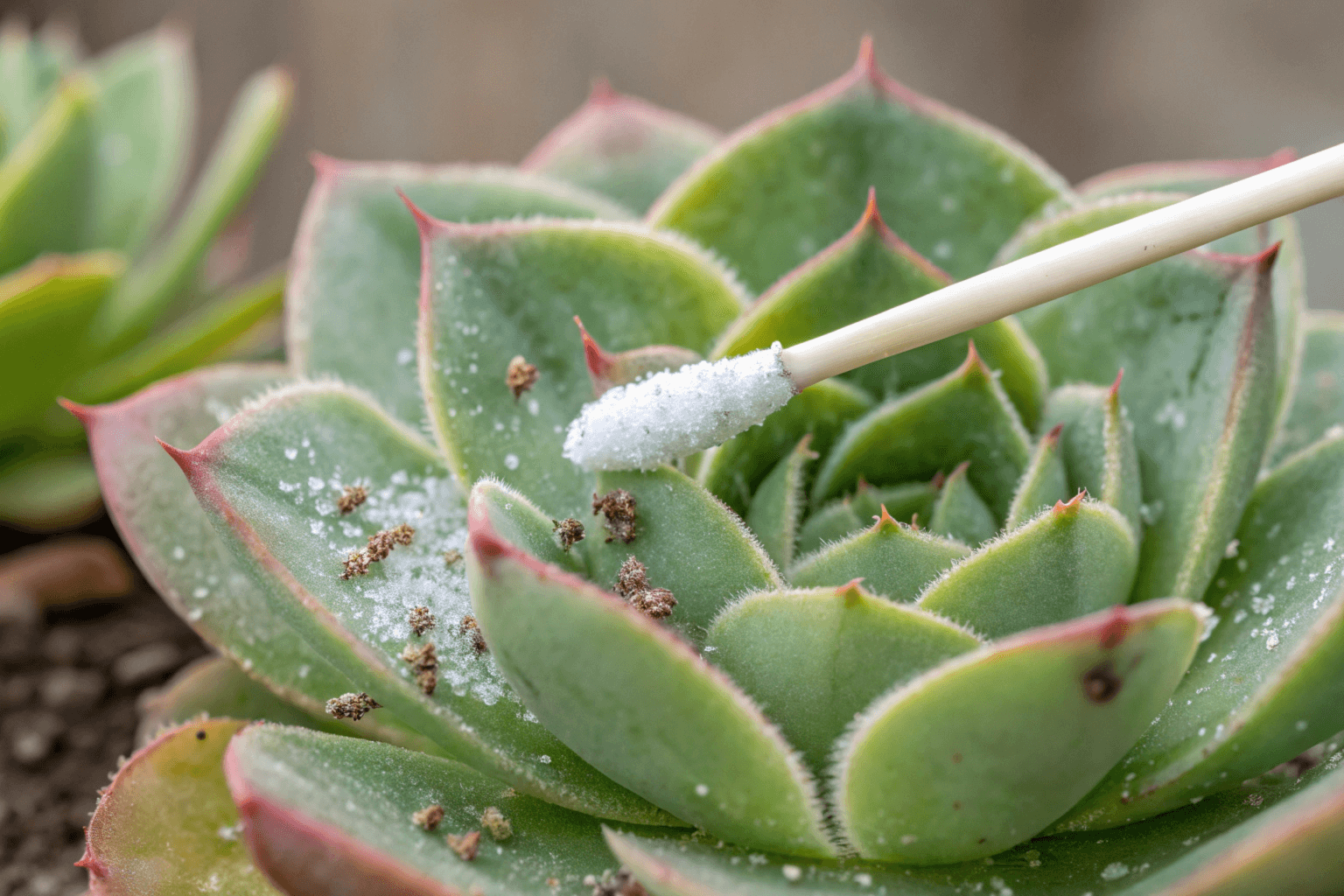
2. Fungal and Bacterial Infections
Overwatering or poor ventilation can lead to fungal or bacterial infections, manifesting as brown spots, mushy leaves, or a white powdery coating.
Solution:
- Remove affected leaves immediately to prevent the spread.
- Allow the soil to dry out and improve airflow around the plant.
- Apply a fungicide for fungal issues or sterilize the soil if the infection persists.
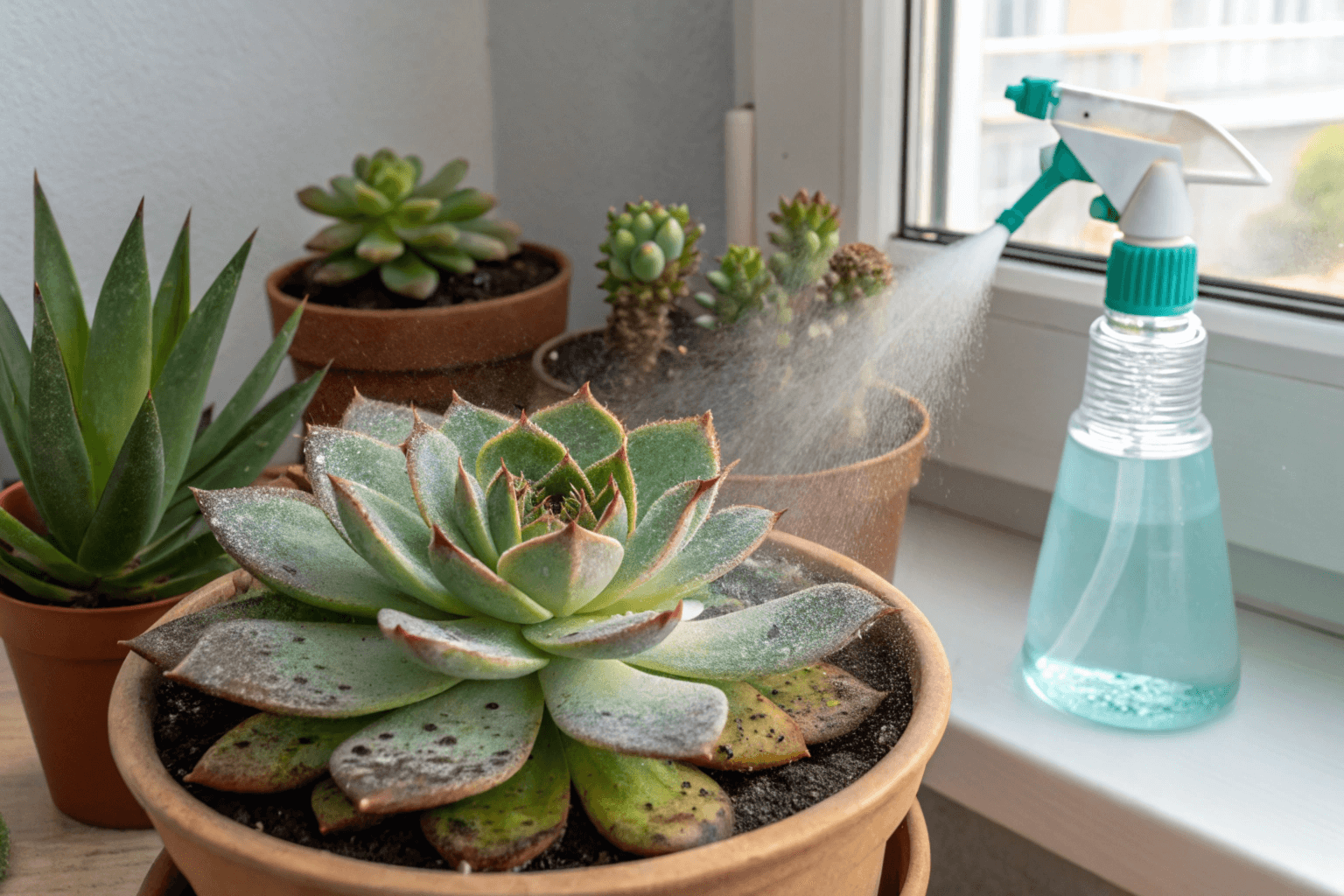
Troubleshooting Growth Problems
1. Discolored, Soft Growth
If your Echeveria has soft, discolored leaves, it may be suffering from overwatering.
Excess moisture can cause root rot, leading to mushy, unhealthy growth.
Solution:
- Remove the plant from its pot and inspect the roots. Trim away any black or mushy roots.
- Repot the plant in fresh, well-draining soil, and water sparingly until it recovers.
- Ensure the pot has proper drainage holes.
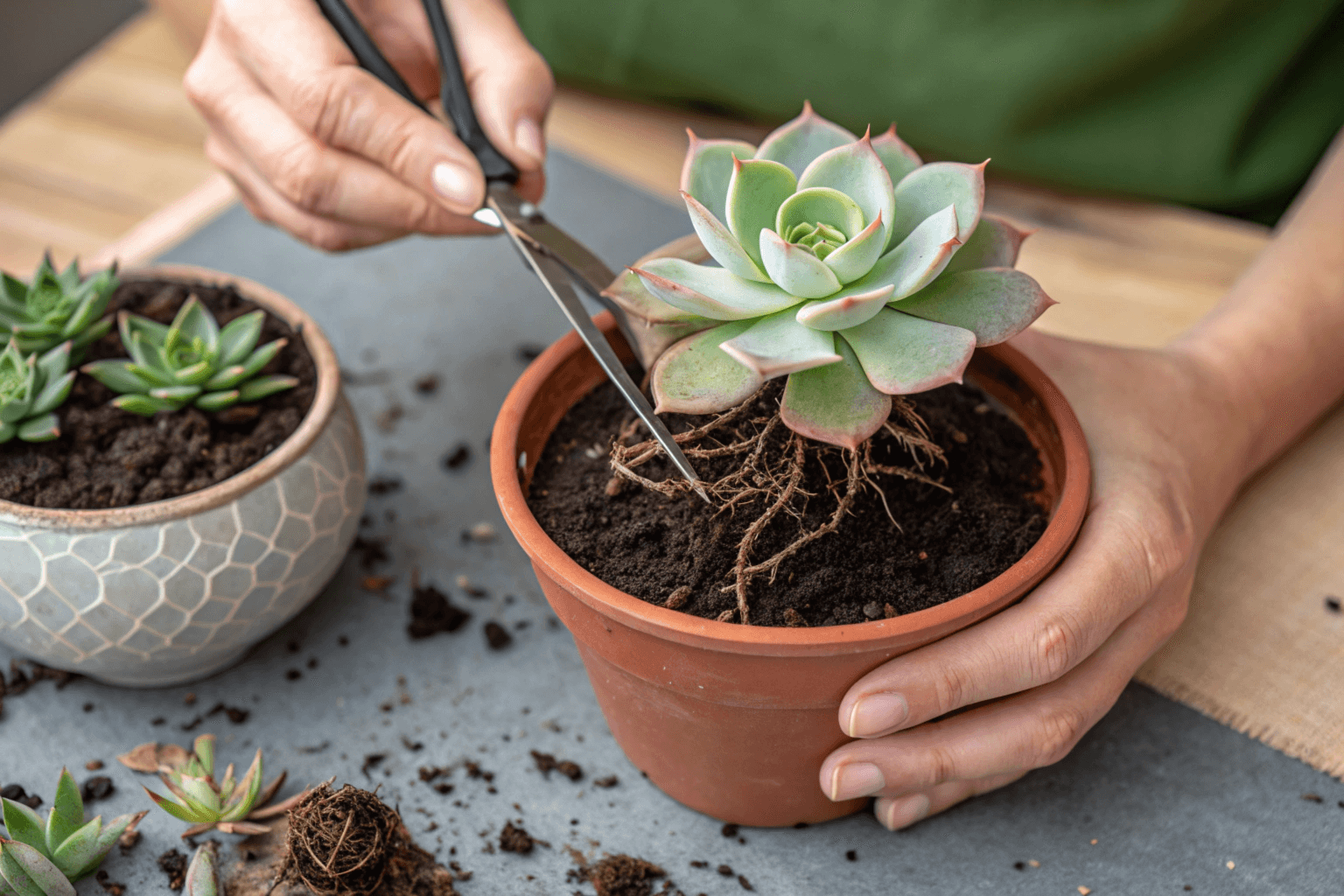
2. Yellowing, Wilting, or Leaf Drop
Yellowing or wilting leaves are often signs of underwatering, nutrient deficiencies, or extreme temperature fluctuations.
Solution:
- Check the soil moisture and adjust your watering schedule.
- Ensure the plant is in a temperature range between 65°F and 80°F.
- Use a balanced succulent fertilizer every few months to replenish nutrients.
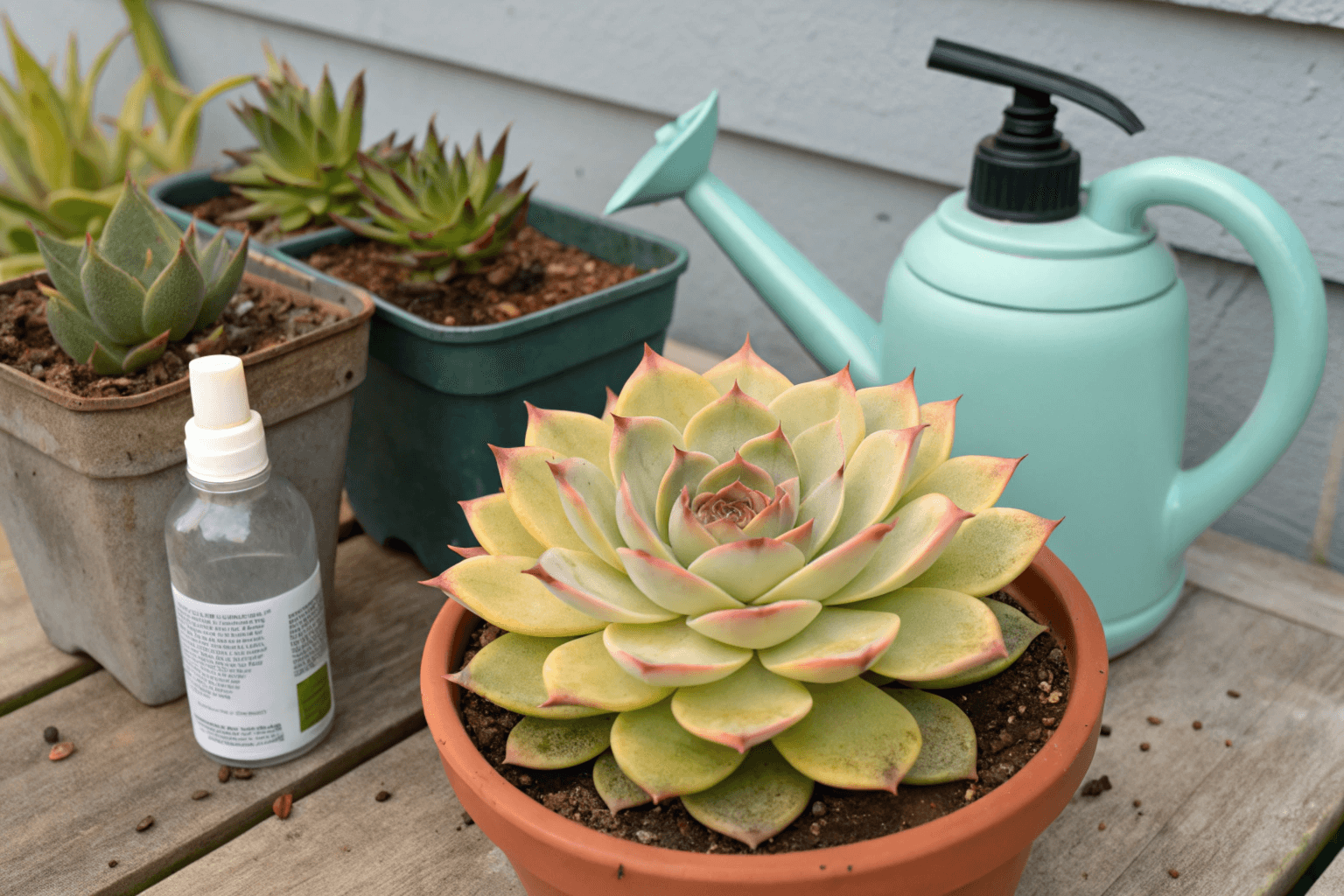
3. Limp, Shriveling Leaves
Shriveled leaves typically indicate dehydration or stress from excessive heat.
Solution:
- Water your Echeveria deeply but infrequently, ensuring the soil dries out between waterings.
- Move the plant to a shadier spot if it’s exposed to harsh, direct sunlight for extended periods.

Caring for Echeveria is a journey of observation and understanding.
By knowing the signs of common issues and responding swiftly, you can keep your plants healthy and thriving.
Remember, every problem is an opportunity to learn and connect more deeply with your green companions.
With a little patience and the right care, your Echeveria will reward you with beauty and resilience.
Seasonal Care and Maintenance: Nurturing Your Echeveria Year-Round
Caring for Echeveria is not just about keeping them alive; it’s about watching them thrive and bloom beautifully.
Like any plant, Echeveria requires a little seasonal care to remain healthy and vibrant throughout the year.
With thoughtful pruning, timely repotting, and attention to seasonal needs, you can help your succulent not only survive but flourish in every season.
Pruning Echeveria: Tips for Healthy Growth
Pruning is an essential part of maintaining your Echeveria.
Removing dead or damaged leaves not only keeps the plant looking tidy but also prevents pests and diseases from taking hold.
- Use clean, sharp scissors or pruning shears to snip away yellowed or dried leaves at their base.
- Avoid cutting too close to the stem to prevent injury to the plant.
- Prune leggy stems to encourage compact and bushy growth.
Regular pruning keeps your Echeveria healthy and encourages new, vibrant leaves to grow.
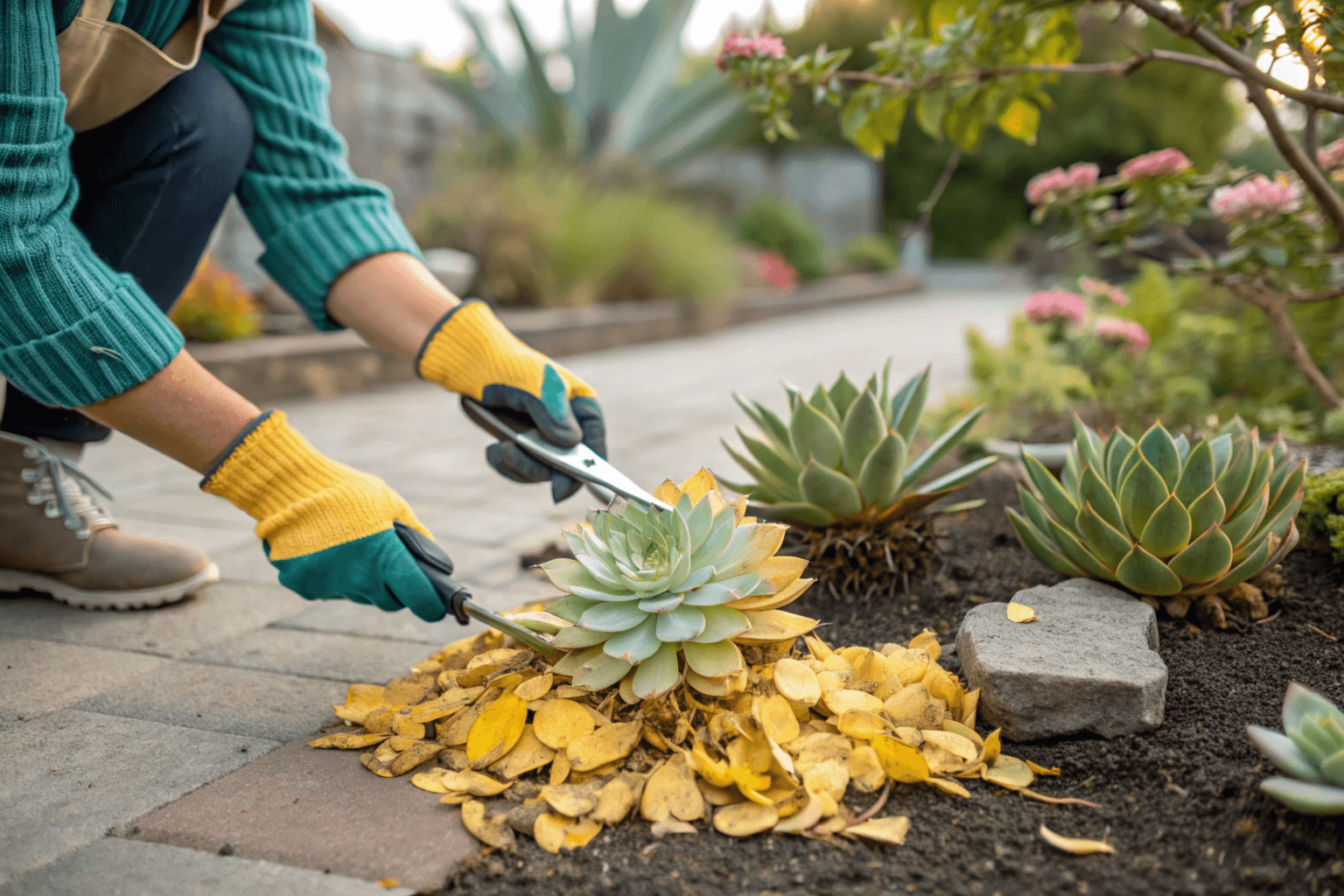
Potting and Repotting: How and When to Repot
As your Echeveria grows, it may outgrow its pot.
Repotting gives the roots more space to expand and ensures fresh, nutrient-rich soil for continued growth.
- When to Repot: Repot every 2–3 years or when you notice roots growing through the drainage holes.
- How to Repot:
- Gently remove the plant from its pot, brushing away old soil.
- Inspect the roots for any signs of rot and trim if necessary.
- Place the plant in a slightly larger pot with fresh, well-draining soil.
Repotting is best done in spring or early summer when the plant is actively growing.
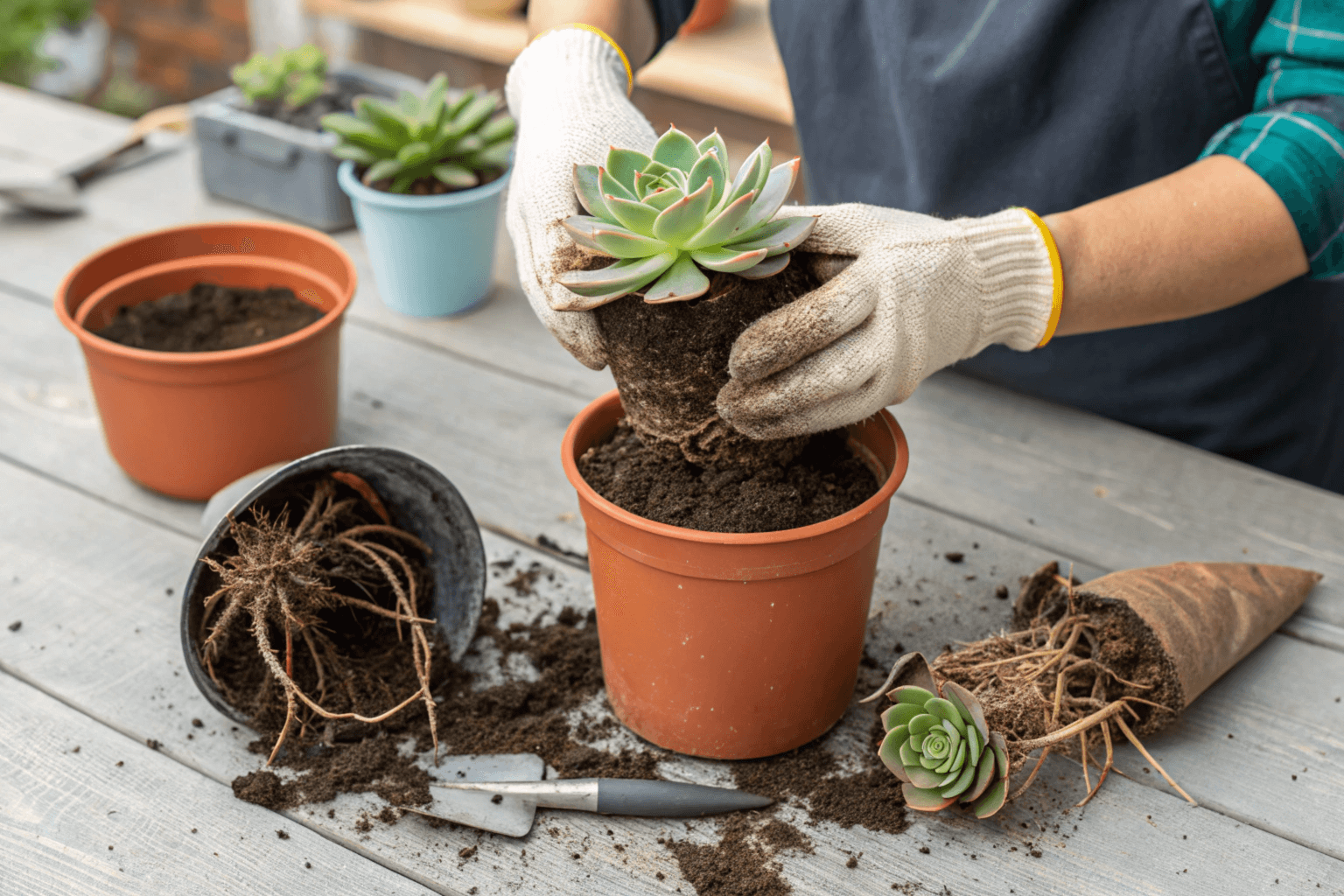
Overwintering Echeveria: Cold Protection Strategies
For those living in colder climates, overwintering Echeveria is crucial to protect it from frost damage.
- Move your plant indoors if temperatures drop below 40°F (4°C).
- Place it near a bright window where it can receive indirect sunlight.
- Reduce watering significantly during the winter months, as the plant’s growth slows down.
If keeping Echeveria outdoors, consider using frost cloths or moving it to a sheltered location.
How to Encourage Blooming: Optimal Conditions for Flowering
An Echeveria in bloom is a sight to behold, with its delicate flowers adding a burst of color to the rosette’s charm.
Encouraging blooms requires providing the right conditions:
- Ensure plenty of bright, indirect sunlight. Blooming typically occurs in spring or summer, triggered by longer daylight hours.
- Use a low-nitrogen fertilizer during the growing season to promote flower production.
- Allow the plant to experience a mild temperature drop at night, mimicking natural conditions.
Patience is key, as not all Echeveria will bloom every year, but when they do, it’s truly magical.

Taking care of Echeveria through the seasons is like nurturing a living piece of art.
Every leaf, every bloom, and every new growth reflects the love and care you provide.
By following these seasonal care tips, you will enjoy healthy, thriving plants that brighten your home or garden all year round.
Echeveria vs. Sempervivum: Key Differences
Imagine strolling through a succulent nursery, surrounded by a sea of stunning rosettes.
At first glance, Echeveria and Sempervivum might seem like twins, but with a closer look, their unique personalities shine through.
Understanding their differences can help you make the right choice for your garden or indoor oasis. Let’s explore how these two succulent stars stand apart.
Comparative Features
1. Leaf Shape and Texture
- Echeveria: Known for their smooth, fleshy leaves with a soft, waxy coating. The leaves often taper to a delicate point, giving them a refined, elegant look.
- Sempervivum: Often called “Hens and Chicks,” these plants have slightly tougher leaves with a sharper edge. Many varieties have fine, hair-like filaments along the leaf margins, giving them a more rugged appearance.
2. Color Variations
- Echeveria: Offers a kaleidoscope of colors, ranging from soft pastels like pink and lavender to bold hues of green, blue, and even red. Many species change colors with light exposure, adding dynamic beauty.
- Sempervivum: While also colorful, their palette leans towards earthy tones like green, burgundy, and bronze. They retain their colors well even in cooler climates.
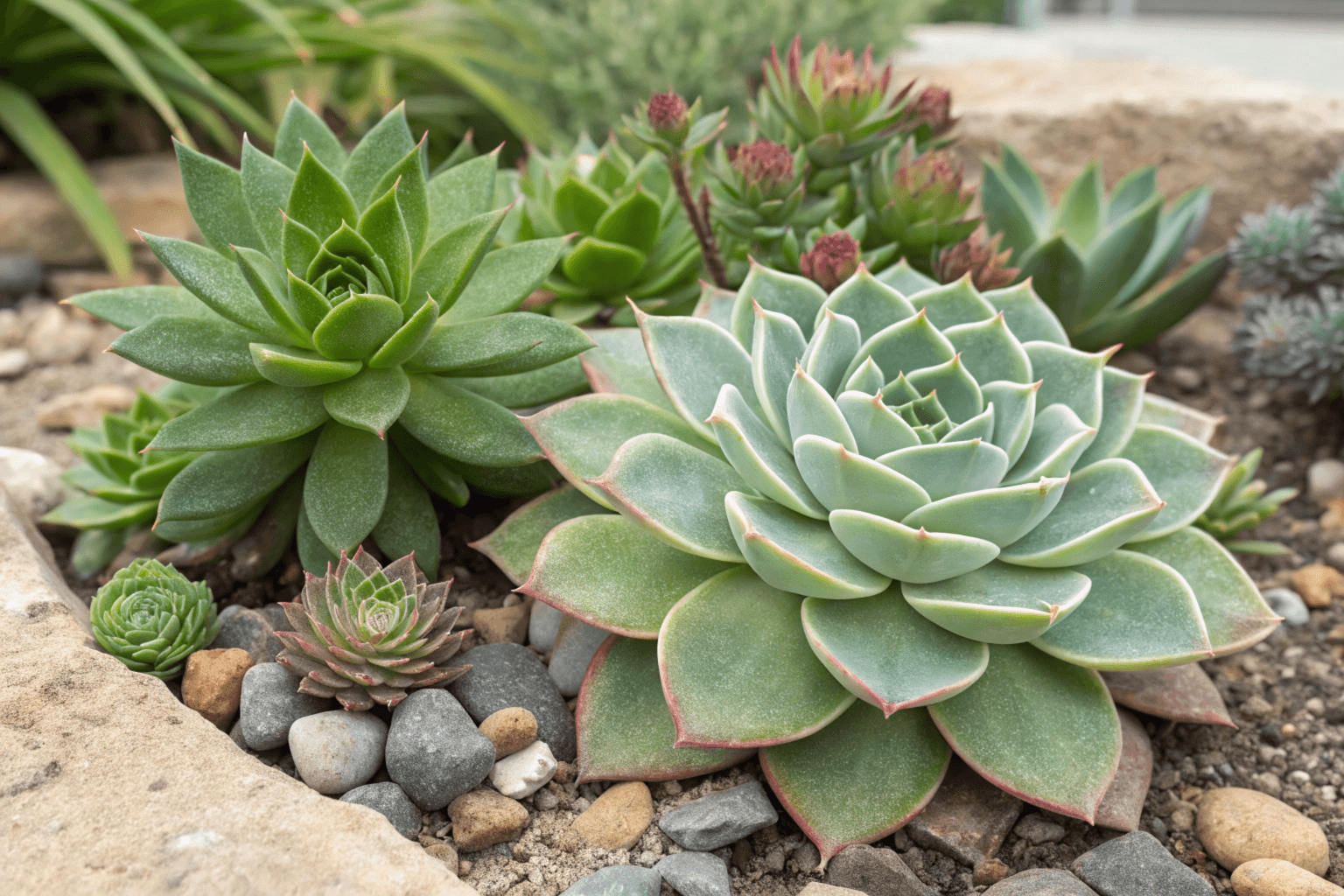
3. Growth Habits
- Echeveria: Prefers warm climates and grows in a more solitary manner, with larger, singular rosettes.
- Sempervivum: Thrives in colder conditions and multiplies rapidly, producing offsets (chicks) that cluster around the mother plant.
Choosing the Right Plant for Your Garden
1. Climate Compatibility
- If you live in a cold or frost-prone area, Sempervivum is your go-to choice. It’s hardy and can survive harsh winters without fuss.
- For warm, frost-free regions, Echeveria thrives, especially when given plenty of sunlight.
2. Maintenance Needs
- Echeveria: Ideal for gardeners seeking a show-stopping focal point with minimal propagation efforts. Its larger rosettes are perfect for containers and indoor displays.
- Sempervivum: Suited for gardeners who love a fast-spreading ground cover or want a low-maintenance addition to rock gardens.
3. Aesthetic Goals
- Want a splash of dramatic, vibrant color? Go for Echeveria.
- Prefer a natural, rustic look? Sempervivum fits the bill perfectly.

Both Echeveria and Sempervivum bring unique beauty and charm to any garden or home.
By understanding their differences, you can choose the perfect plant to match your style and environment.
Whether you are drawn to the soft elegance of Echeveria or the hardy resilience of Sempervivum, these succulents will reward you with their timeless appeal and easy care.
Conclusion
Echeveria is more than just a plant—it’s a beautiful, easy-to-care-for succulent that can brighten up any space.
Its colorful, round shape makes it perfect for both new and experienced plant lovers. You can put it on a windowsill, in a garden, or create cool plant displays.
Taking care of an Echeveria helps you feel connected to nature and enjoy something simple and beautiful.
When you grow this plant, you’re creating a small, peaceful space that can make you happy.
FAQs
Q: Does Echeveria need direct sunlight?
Most Echeveria varieties prefer bright, indirect sunlight. 4-6 hours of morning sun or filtered light is ideal. Direct, intense afternoon sun can scorch their leaves, especially in hot climates.
Q: What does the Echeveria symbolize?
In plant symbolism, Echeveria represents endurance, resilience, and adaptability. Its ability to thrive in harsh conditions makes it a symbol of strength and survival.
Q: Are Echeveria succulents safe for cats?
Echeveria is considered non-toxic to cats according to the ASPCA. However, it’s still best to prevent pets from chewing on the plants to avoid potential digestive upset.
Q: Is Echeveria a lucky plant?
In some cultural traditions, succulents like Echeveria are considered lucky plants, symbolizing good fortune, prosperity, and positive energy. They’re often used in feng shui for bringing protective and positive vibes.
Q: How often do I water my Echeveria?
Water Echeveria sparingly, typically every 2-3 weeks. Allow the soil to completely dry between waterings. Reduce watering in winter and increase slightly during active growth
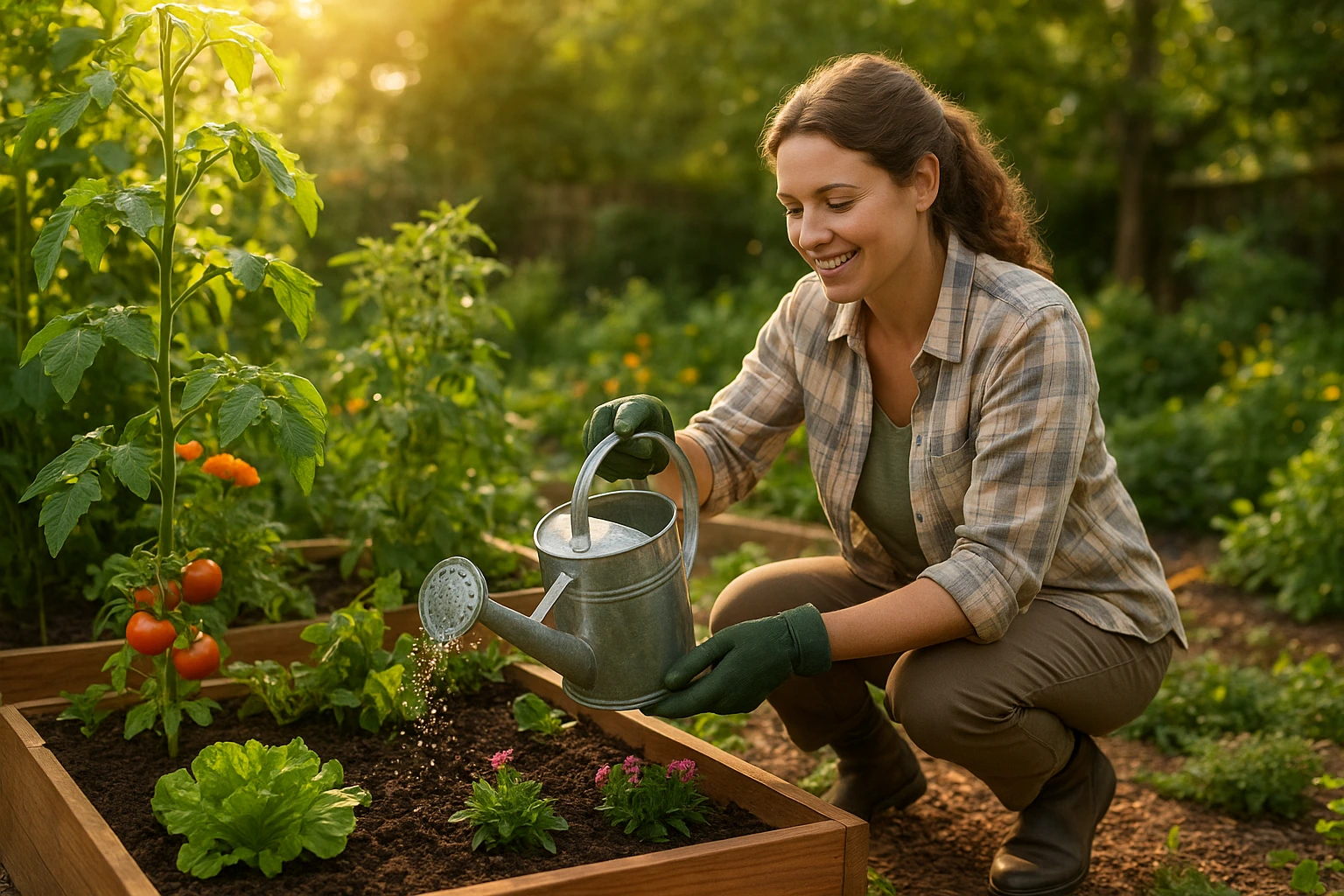







2 Responses